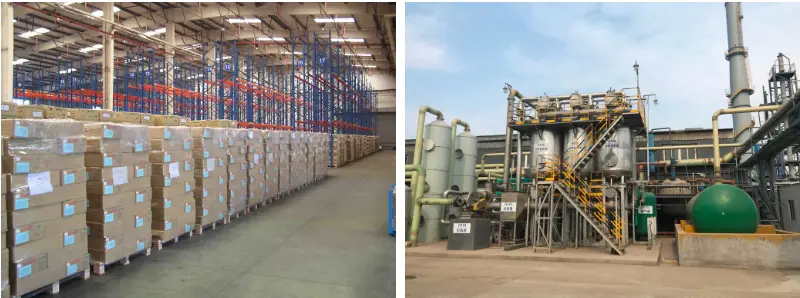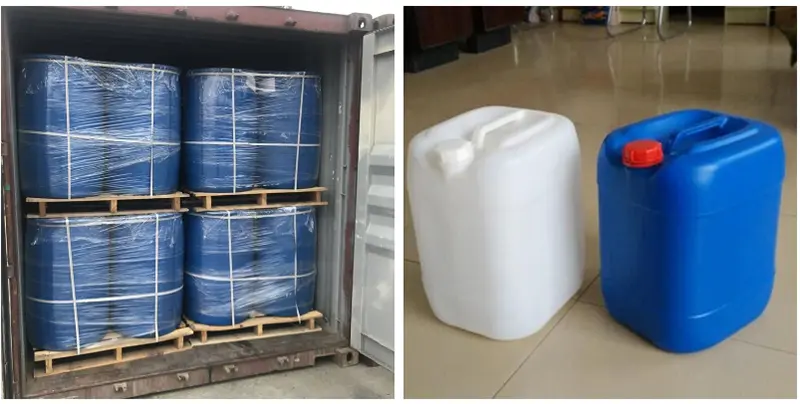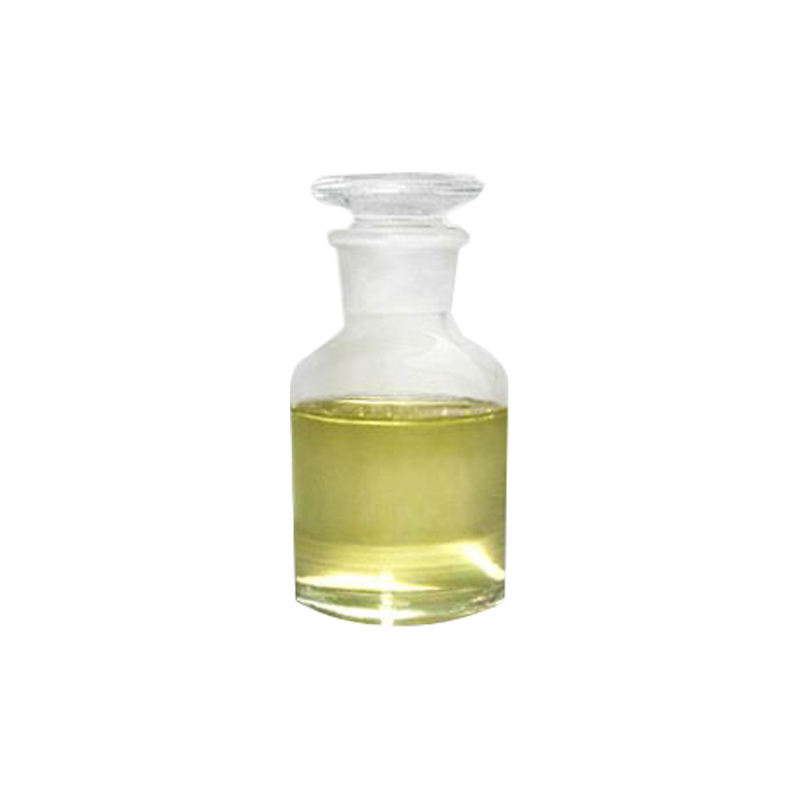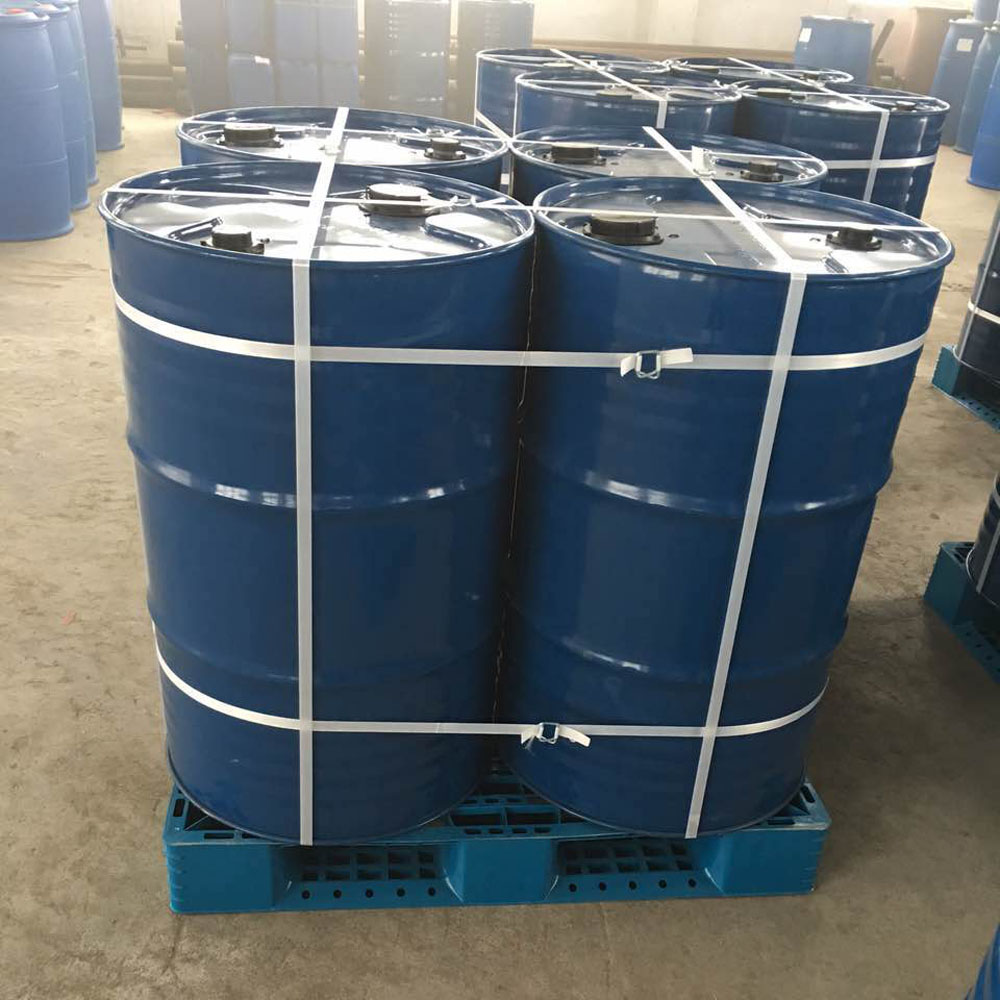Oleic acid CAS#112-80-1
Oleic acid CAS#112-80-1 Promotion Season Now in Store and Free Sample for Testing with Factory Price
Chemical Name:Oleic acid
CAS No.112-80-1
Molecular Formula:C18H34O2
Molecular weight: 282.46
Sample: Available
Mode of Transportation
1. By Air, fast but expensive.
2. By Sea, usual and economy.
3. By Train, suit for middle Asia countries.
4. By Express, suit for small package.
We only provide highest quality goods available, accompanied by after support!
Products Description of Oleic acid CAS#112-80-1
Insoluble in water, soluble in benzene, chloroform, miscible with methanol, ethanol, ether and carbon tetrachloride. Because it contains double bonds, it is easily oxidized by air, producing an unpleasant odor and turning yellow. When treated with nitrogen oxides, nitric acid, mercurous nitrate and sulfurous acid, it can be converted into oleic acid. When hydrogenated, it becomes stearic acid. The double bonds can easily react with halogens to form halogenated stearic acid. It is separated from olive oil or lard by steam distillation and crystallization or extraction after hydrolysis. Oleic acid is a good solvent for other oils, fatty acids and oil-soluble substances. It is used to make soaps, lubricants, flotation agents, ointments and oleates, etc.
Oleic acid Chemical Properties
Melting point | 13-14 °C(lit.) |
Boiling point | 360 °C |
density | 0.89 g/mL at 25 °C(lit.) |
vapor density | 1.03 (vs air) |
vapor pressure | 52 mm Hg ( 37 °C) |
refractive index | n20/D 1.377 |
FEMA | 2815 | OLEIC ACID |
Fp | 133 °F |
storage temp. | -20°C |
solubility | Miscible with ethanol, ether, acetone, chloroform, dimethyl formamide and dimethyl sulfoxide. |
form | Liquid |
pka | pKa 5.35(H2O,t =25) (Uncertain) |
Specific Gravity | 0.892 (20/4℃) |
color | Colorless to pale yellow |
Odor | Peculiar Lard-Like |
Odor Type | fatty |
Water Solubility | negligible |
Sensitive | Air Sensitive |
Merck | 14,6828 |
JECFA Number | 333 |
BRN | 1726542 |
Hydrophilic-Lipophilic Balance (HLB) | 1 |
Dielectric constant | 2.5(20℃) |
Stability: | Stable. Combustible. Incompatible with strong oxidizing agents, aluminium. |
InChIKey | ZQPPMHVWECSIRJ-KTKRTIGZSA-N |
LogP | 7.698 (est) |
CAS DataBase Reference | 112-80-1(CAS DataBase Reference) |
NIST Chemistry Reference | 9-Octadecenoic acid (Z)-(112-80-1) |
EPA Substance Registry System | Oleic acid (112-80-1) |
Safety Information
Hazard Codes | T,Xi |
Risk Statements | 23/24/25-34-40-43-36/37/38-38 |
Safety Statements | 36/37-37/39-26-36-36/37/39 |
RIDADR | UN 1198 3/PG 3 |
WGK Germany | 2 |
RTECS | LP8925000 |
F | 10 |
Autoignition Temperature | 363°C |
TSCA | Yes |
HS Code | 29161500 |
Hazardous Substances Data | 112-80-1(Hazardous Substances Data) |
Toxicity | LD50 i.v. in mice: 230±18 mg/kg (Or, Wretlind) |
Product Application of Oleic acid CAS#112-80-1
Oleic acid is an organic chemical raw material. It can be used as an organic chemical raw material to produce epoxy oleate through epoxidation, which is used as a plasticizer. It can be used as an organic chemical raw material to produce azelaic acid through oxidation, which is a raw material for polyamide resin. In addition, oleic acid can also be used as an emulsifier for pesticides, printing and dyeing auxiliaries, industrial solvents, metal mineral flotation agents, release agents, etc. It can also be used as a raw material for the production of carbon paper, ballpoint oil and typing wax paper.
Various oleate products are also important derivatives of oleic acid. As a chemical reagent, it is used as a chromatographic comparison sample and for biochemical research to detect elements such as calcium, copper, magnesium and sulfur.
Oleic acid can be used as a raw material for plastic plasticizers, engineering plastics, synthetic fibers, nylon 8 and 9, softeners, wood preservative additives, leather auxiliaries, various textile oil additives, and finishing agents; it can be used to produce synthetic detergents, detergent soaps, emulsifier S-80, various cosmetic surfactants and dispersants; it can be used as a printing ink solvent and composite glue; it can be used as a collector and demulsifier for mineral processing;
It can also be used in metal processing and lubricating oils such as gear oils, rolling oils, hydraulic oils, and metal cutting oils. Sodium or potassium salt of oleic acid is one of the ingredients of soap. Pure sodium oleate has good detergency and can be used as an emulsifier and other surfactants. Lead, manganese and cobalt salts of oleic acid are paint driers; copper salts are preservatives for fishing nets; aluminum salts can be used as fabric waterproofing agents and thickeners for certain lubricants. Other metal salts of oleic acid can also be used in polishing agents, and its barium salt can be used as a rodenticide.
Factory and Equipment Show


Fast delivery time
Inventory 2-3 working days New production 7-10 working days









